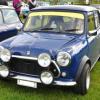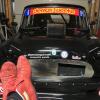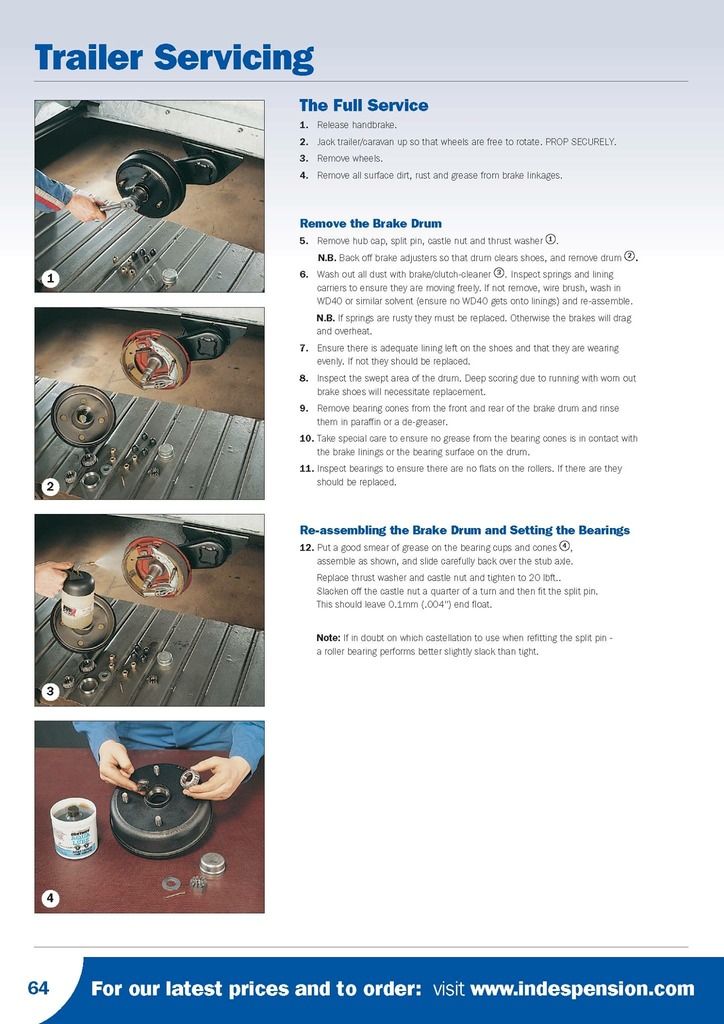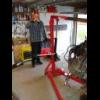Hi All,
Apologies firstly for starting a new topic - reason is that my original post seems to have been removed - maybe not a bad thing as it could mislead so apologies for that also.
My comment was that wheel bearings should be run with endplay not preload.
- this was based on my general experience with manually adjusted bearings where they are run with very slight endplay as it is not possible to gauge/measure the amount of preload you might impart with the hub nut; here we are NOT talking mini, we are talking bearings with no spacer between races where the adjustment IS meant to be made using the hub nut.
You can measure/perceive a small amount of endplay in a bearing - and it is safer to run a bearing with a little (known) endplay rather than too much (unknown) preload as excessive preload can cause bearing failure very quickly , which is why this endplay setting is recommended for manual adjustment
N.B. As mentioned correctly many times you cannot "adjust" the bearing in a mini hub by playing with the CV nut torque as this just tightens across several flat surface interfaces but as also mentioned many times it should be tightened correctly (flat washer first and correct torque for CV joint type) to prevent other grief with CV and/or bearings
For the mini, and now I suppose many bearings/cars, the adjustment is made by the bearing manufacturer by selection/adjustment of components - I assumed (incorrectly) that the setting they applied would be the "safe" endplay setting. This is not correct for the reasons below.
Apologies to MokeSpider - he pointed out correctly (which I didn't disagree with!) that a bearing will give optimum performance and life when used in a slight preload situation (see attached file if it works) - which is why manufacturers DO run bearings slightly preloaded - then, as MokeSpider pointed out, the mini does run preloaded bearings, which I was incorrect to question as I now find this to be correct after looking at the various tolerances.
Based on what I found out the bearing is given a bench setting of 0.003-0.005" endplay (or clearance)
(from the picture in the previous topic you will see it is marked 0.004")
The bearing is 2.4404-2.4414" outside diameter and the hub should be be sized at 2.4424-2.4434" based on the normal interference fit range of 0.003" to 0.001" tight (tightest fit = 2.4434-2.4404 = 0.003 and loosest fit 2.4424-2.4414 = 0.001)
When the outers are tight fitted in the hub this reduces the bench end play and (by calculation) will give a mounted setting of 0.006" preload (or tight) to 0.002" endplay (clearance)
The exact figure in that range is dependent on where in the tolerance ranges the exact sizes of the hub bores, the outside diameters of the outer races and the actual adjusted bench end play are.
Note - this does not include any variation in hub shoulder width (which I have not been able to find out definitely but is likely to add 0.001" extra endplay assuming a 0.001" width tolerance )
So this does mean that bearings will predominantly be in a preload situation BUT if you have the maximum bench end play with the smallest interference fit (so smallest bearing and largest hub bore) and smallest hub shoulder it is possible that you will end up in the small mounted endplay range; or more endplay if the hub bore/shoulder is worn (reduces the interference fit so reducing the change from bench end play to mounted setting
The cheap bearing manufacturers have less control over all these tolerances so as people have found some work and some don't and even if these tolerances are correct, then the actual rolling contact surfaces have to be half decent as well, and again some are and some aren't.
It does pay to buy a reputable brand as 99.73% or more (!) will work perfectly - the cheap ones will work maybe, but you may or may not be lucky......
I should say here that I rebuilt some hubs recently and re-fitted the (reputable brand) bearings after inspecting them carefully - neither side had any discernible play (in preload I guess) so I kind of ignored my own (incorrect) advice but assumed the play was so small that I couldn't feel it .......
The attached file (if it works!) shows the graph of endplay versus preload and you can see that if you go too far into preload you will lose bearing life very quickly whereas a little bit too much endplay will reduce the life but in a "safer" way - it also talks about manual setting of non-spacered bearings and that they should be "primarily end play"
 Bearing setting graph.pdf 492.97K
20 downloads
Bearing setting graph.pdf 492.97K
20 downloads
Regards, Mark


















